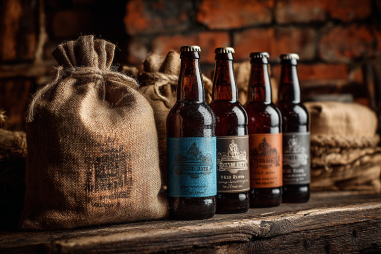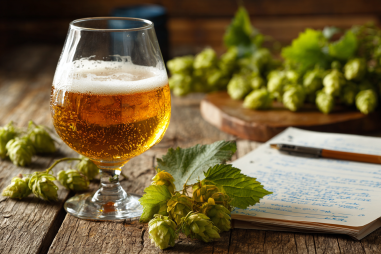Catharina Sour beers are known for their vibrant, refreshing character, and a big part of that appeal comes from the creative incorporation of fruits during the brewing process. This Brazilian craft beer style embraces fruitiness as a defining trait, enhancing the natural tartness and adding layers of flavor complexity. Whether you’re a homebrewer looking to experiment or a beer enthusiast eager to understand what makes these sours so distinctive, exploring the best fruit combinations can elevate your Catharina Sour experience to a whole new level.
The Role of Fruit in Catharina Sour
Fruits are not just an addition but a core component that shapes the identity of Catharina Sour beers. The style is celebrated for balancing the sharp acidity of a sour ale with the juicy, aromatic intensity that fruits provide. By using various fruits, brewers can craft unique flavor profiles that highlight both the freshness of the ingredients and the beer’s signature tartness. The fruit’s sugars feed the yeast and bacteria during fermentation, often resulting in a more rounded sour flavor and sometimes adding natural carbonation.
Each type of fruit brings a different character—some add tropical brightness, others bring deep, rich sweetness, while some infuse crisp, refreshing notes. This versatility allows Catharina Sour to be a canvas for endless experimentation.
Popular Fruits Used and Their Flavor Profiles
Choosing the right fruit is essential to complementing and enhancing the sour base of Catharina Sour. Here are some of the most popular fruits used along with their distinctive flavor profiles:
- Passionfruit: Known for its bright, tangy aroma and intense tropical flavor. It adds a lively zing that perfectly matches the sour notes.
- Guava: Offers a sweet, fragrant, and slightly floral flavor that brings richness and complexity.
- Mango: Brings a luscious, sweet, and juicy tropical flavor that balances tartness while adding depth.
- Pineapple: Provides a sharp sweetness and a bit of tartness, contributing a crisp tropical vibe.
- Strawberry: Adds familiar berry sweetness and subtle acidity, making the beer more approachable.
- Raspberry: Offers bright berry notes with an underlying tartness that mirrors and amplifies the sour base.
- Blackberry: Brings deep, wine-like fruitiness with earthy undertones, adding complexity.
How Individual Fruits Impact Aroma and Taste
When fruit is integrated into Catharina Sour beer, it affects not only the flavor but also the aromatic profile and mouthfeel. For example, passionfruit often fills the glass with fresh, floral scents that invite you in with their intensity, while mango’s sweet juiciness imparts a smooth mouthfeel and a lingering fruity sweetness that balances the acidity.
The aromatic impact is crucial because a large part of tasting beer happens through smell. Fruits like guava and pineapple create vibrant noses that complement the beer’s funky yeast and bacteria characteristics, making the overall sensory experience more engaging and enjoyable.
When experimenting, it’s important to consider that some fruits, like raspberries, can contribute a sharper tartness that may intensify the sour character, while others like strawberries soften it with sugar and sweetness.
Techniques for Adding Fruits During Brewing
Adding fruit to Catharina Sour beer can happen at various stages during the brewing process, each with its own impact:
- During Primary Fermentation: Incorporating fruit here allows the yeast and bacteria to ferment the fruit sugars, integrating the fruit flavor deeply into the beer, though some flavor volatility may occur.
- During Secondary Fermentation: Adding fruit after the vigorous primary fermentation preserves more of the fruit’s fresh aroma and taste, as there’s less yeast activity to consume the sugars and aromatics.
- Direct Addition Before Packaging: Fruit purees or juices can be added shortly before kegging or bottling, which preserves much of the fresh fruit character but requires careful handling to avoid contamination.
- Using Freeze-Concentrated Fruit: Some brewers freeze fruit to concentrate flavors and then add the thawed puree in secondary fermentation for an intense fruit impact.
Sanitation is critical throughout to prevent unwanted microbial activity. Proper cleaning, pasteurizing fruit purees if necessary, and monitoring fermentations closely helps maintain quality and consistency.
Seasonal Fruit Pairing Ideas
The best fruits for your Catharina Sour can also depend on the season, allowing you to make the most of peak freshness and flavor intensity:
- Spring: Strawberries and raspberries shine this time of year, adding bright berry notes that match spring’s light, refreshing mood.
- Summer: Tropical fruits like mango, passionfruit, and pineapple are perfect for summer, bringing vibrant, juicy flavors that cool you down.
- Fall: Consider fruits like apples or blackberries that offer a deeper, earthier profile to complement the season’s richness.
- Winter: Citrus fruits such as oranges or tangerines mingle beautifully with sour beers, providing invigorating brightness to brighten colder months.
Using seasonal fruit also supports sustainability and often yields better results due to the fruit’s peak ripeness.
Tips for Experimenting with New Combinations
One of the joys of brewing Catharina Sour is the creative freedom to explore new fruit combinations. Here are some tips for making your experiments rewarding:
- Start Small: Test new fruits or blends with small batch brews before scaling up, to fine-tune your ratios and timing.
- Balance the Tartness: Pay attention to how sweet or tart your fruit is and adjust the recipe to maintain balance, possibly blending fruits to combine sweetness and acidity.
- Use Purees and Juices: Purees can provide a consistent flavor and texture, while fresh fruit can add subtle layers but might be less predictable.
- Blend Different Fruits: Combining fruits like passionfruit and guava creates exotic tropical profiles, while raspberry with blackberry produces a complex berry punch.
- Document Your Process: Keep detailed records of fruit quantities, timing, and fermentation parameters so you can replicate or improve your favorite batches.
Food Pairings for Fruit-Forward Catharina Sours
When served alongside food, Catharina Sour beers with fruit infusions can enhance dining experiences by complementing and contrasting flavors. Consider these pairing ideas:
- Grilled Seafood: The bright acidity and tropical notes in passionfruit or mango-infused sours cut through the richness of grilled fish or shrimp.
- Spicy Dishes: Fruit-forward sours with pineapple or guava balance spicy Asian or Mexican dishes by cooling heat and adding sweetness.
- Cheeses: Creamy goat cheese or fresh mozzarella works beautifully with berry-infused sours, creating a delicate flavor contrast.
- Salads: A light salad with citrus vinaigrette pairs well with citrus-added Catharina Sours for a refreshing palate experience.
- Desserts: Fruit sours can brighten fruity desserts like tarts, or add a tart finish to rich chocolate treats.
Exploring food pairings alongside your favorite fruit combinations in Catharina Sour elevates both the beer and the meal.
Crafting Your Unique Catharina Sour Experience
Catharina Sour beer offers a delightful playground for creativity, inviting brewers and drinkers alike to customize their experiences with the perfect fruit combinations. Understanding how different fruits influence aroma, flavor, and mouthfeel helps you select blends that suit your palate. Whether you prefer the tropical zest of passionfruit and guava or the deep berry notes of raspberry and blackberry, there are countless ways to enhance the tart, refreshing base.
Remember to consider seasonal availability, experiment thoughtfully, and pay attention to balance and fermentation techniques. The result can be a refreshing, vibrant beer bursting with layers of juicy character that embodies the essence of Catharina Sour — a harmonious marriage of sourness and fruitiness that keeps you coming back for more.







